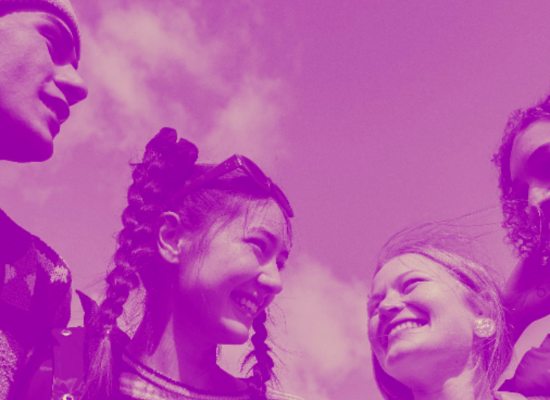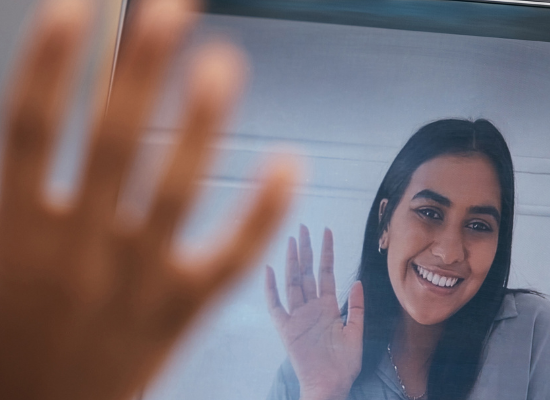
Stephanie Hepburn is a writer in New Orleans. She is the editor in chief of #CrisisTalk. You can reach her at .
There’s a chasm between the momentum of 988 and how it’s reaching Black people, said Victor Armstrong. He’s the Chief Diversity Officer at RI International and the former mental health commissioner of North Carolina. “Many people in Black and Brown communities aren’t even aware of 988 or the transition from 911 to 988 for mental health and substance use emergencies,” he emphasized. For those who know of 988, there’s skepticism on how a 988 response differs from that of 911. “In the Black community, when we hear about emergency systems, we think of 911 and policing.”
Last month, Armstrong launched Strong Talk, a podcast focused on diversity, equity, and mental health and substance use healthcare access. He’s hoping to spark conversation in Black communities on rising suicides among Black youth and suicide prevention. With behavioral health leaders, he plans to dive into how they plan to design, expand, and implement equitable 988 emergency systems. Both require tough conversations or, as Armstrong says, “strong talk.”
Equity isn’t feasible without state and federal agencies and policymakers understanding why Black people might mistrust a 988 system they intended to build or have redesigned with equity at its core. “In large part, it’s because of our relationship with the 911 system, which has been tenuous at best,” noted Armstrong. “At its worst—well, we’ve seen what happened with Tyre Nichols and George Floyd.” Last month, Memphis police officers beat Tyre Nichols to death. In May 2020, Minneapolis police officers pinned George Floyd to the ground, with one officer, Derek Chauvin, putting his knee on Floyd’s neck for 9 1/2 minutes. He didn’t remove his knee even after Floyd lost consciousness and a pulse or when paramedics arrived. Both Nichols and Floyd called out for their mothers. “In Black and Brown communities, 988 is seen as just the next evolution in a system that wasn’t working for us to start with,” said Armstrong.
In most places across the nation, law enforcement and the emergency room remain the default responder and provider, respectively, for mental health emergencies. To divert people experiencing mental health or substance use challenges from 911 and traditional first responders—law enforcement and emergency medical service or fire department paramedics—have done so through a partnership with them. For example, Austin, Harris County, and Tucson have mental health experts on the 911 call center floor, in-person or virtually. These experts can see incoming 911 calls and identify people who might need mental health support. In Austin, clinicians divert roughly 83% of 911 mental health calls from police.
The effort often provides a data feedback loop on calls that should have gotten a mental health response but didn’t and helps crack open the black box around 911 call codes. Unfortunately, these call codes aren’t standardized, with many mental health and quality of life calls coded as “suspicious person,” “directed patrol,” “criminal trespass,” “street/sidewalk hazard,” “person injured/down,” “demented person,” or “public indecency.” Also, 911 calls are often made by third parties—a person reporting on what another person is experiencing. Or rather their perception of another person’s experience, which is shaped by their own viewpoint and biases.
Some communities have also worked to build a relationship between mental health and law enforcement to ensure police can do rapid drop-offs at crisis stabilization centers. By providing quick drop-off access, Phoenix and Tucson have found that law enforcement are more likely to drop off people experiencing a mental health emergency at a stabilization center than take them to jail or the emergency room.
Armstrong points out that while he supports efforts to divert behavioral health emergencies from 911 and law enforcement, much of the 988 dialogue has centered on how 988 benefits them. For example, how 988 will allow police to get back to their jobs faster by decreasing “wall time,” the amount of time they might spend waiting for people to be admitted to an emergency room. While he understands the emphasis is perhaps a carryover from trying to get law enforcement to partner with mental health on diversion, the narrow focus has been a source of frustration. “There’s far less conversation on what 988 means for people who live in historically marginalized communities,” he emphasized.
That’s part of why Armstrong launched Strong Talk—to create space to ensure marginalized populations know about 988. “We need to pull people in who haven’t been part of the conversation,” he said. Not only does that require an explanation of how 988 is different from 911, but also how 988 is the number people should call if they’re in a mental health emergency or believe someone else is experiencing one. “Much of our 988 efforts have been to inform people who would normally call a crisis line to dial 988 instead, but what about people who never would have known to call a crisis line in the first place?”
There are communities, like Oakland, California, that not only want to remove police for behavioral health emergency response but also mental health providers. Melinda Drayton, Oakland’s deputy fire chief, told NPR that residents want a civilian, resident-centered crisis response team and don’t want a licensed social worker as part of that team. In response, the city has rolled out the Mobile Assistance Community Responders of Oakland, MACRO for short, a community response program for non-emergent, non-violent 911 calls. It prioritizes lived experience over formal education for its civilian crisis responder teams. The teams respond to behavioral health, well-being, and community disturbance 911 calls.
Other programs, like the Policing Alternatives and Diversion Initiative, PAD, in Atlanta, explicitly encourage people with lived experience—incarceration, recovery, houselessness, and those who identify as Trans or LGBQ—to apply to work as part of the two-person harm reduction teams. (PAD’s in-person teams provide community outreach, pre-arrest diversion, and respond to people referred to them through Atlanta’s 311 non-emergency service line.) Interactions with civilian responders—community responders and mobile crisis teams—instead of law enforcement can be far safer for people, especially among marginalized populations and people with mental health challenges. Of people killed in the United States by a police officer in the line of duty since January 1, 2015, 27% were Black, and 21% were in a “mental illness crisis.”
It’s critical to partner with communities on the emergency response they need and want, said Armstrong. “We’re not looking for mental health leaders to tell us what we need. Instead, we want a partner to work with us, look at what’s working and what’s not, and honor our voices.” For example, the organization 1 Million Madly Motivated Moms—Black women, mothers and maternal figures, working to end police violence in the United States by 2038—don’t refer people to the 988 system. While 988 call centers reportedly stabilize the vast majority of people who outreach them, Tansy McNulty, the member-driven organization’s founder and CEO, expressed concern about what happens to Black people who need an in-person response. On November 30, she shared on the 988 Crisis Jam that she hopes, in the future, 988 will be able to connect people who need an in-person response to a 24/7 local community or mobile crisis teams. “We just have a long way to go where everyone in this nation has access to a [civilian] crisis response team,” she said.
A discussion in 2021 was the tipping point for the group’s mental health focus. A member was talking about what happened to Elijah McClain, a young man who’d simply been walking down the street when a passerby called 911, reporting that McClain looked “sketchy.” Paramedic Jeremy Cooper administered ketamine to chemically restrain McClain, using a dosage to restrain a 220 lb person. McClain was only 140 lbs, but Black men are often perceived as larger and more frightening than White men of the same size. Aurora Fire Rescue personnel guessed McClain’s weight to be 80 lbs more than his actual weight. McClain soon went into cardiac arrest and was taken off life support six days later. The paramedic administered the drug at the behest of law enforcement.
The 1 Million Madly Motivated Moms member shared that her cousin had witnessed someone in distress but didn’t have the expertise to know if the person was experiencing a mental health breakdown. Her cousin needed someone to call and didn’t want to call the police; her uncle struggled with mental health challenges, and her grandmother always said not to call the police. “I’m scared to call 911 because my grandmother always told us, ‘You don’t call the police because when they get here [sic], they could kill him.’” The members decided to develop a mobile crisis directory and guide where people can reach out for an in-person response instead of calling 911. “Our preference as an organization is for a non-police response for our mental health emergencies,” said McNulty on the 988 Jam. “We want people to get care, not additional trauma.” (It’s important to note that McClain was not experiencing a mental health emergency. He was on his way home from buying ice tea at a convenience store when police responded to a 911 call that he was wearing a ski mask and “looked sketchy.” First responders put him in a now-banned carotid control chokehold, threatened him with a dog bite, and injected him with 500 milligrams of ketamine.)
The appropriate response to justifiable skepticism to any crisis system is to ensure 988 systems are equitable and work with the community, said Armstrong. He highlighted that there’s much to glean from the Covid pandemic in learning how best to partner with community-based organizations. “We saw the impact on people of color and the elderly, and to close that gap and remove those disparities, we had to focus resources specifically in those communities.” That meant engaging people in those communities about how and where to apply resources and who needed to be the messengers.
Armstrong would like to see the same efforts to address the rising suicide rates for Black children and adolescents. “Even though they’re suffering disproportionately, I don’t hear from 988 leadership on how we need to be especially focused on that demographic.” He believes 988 is an opportunity to reimagine emergency mental health services delivery and build bridges with and into historically marginalized communities. “For communities that have had a ‘flawed system,’ it’s an opportunity to fix the flaws,” he said. “For communities that have been marginalized and excluded, it’s an opportunity to feel valued, included, and create connectivity.”
While community partnership is critical, Armstrong said that alone is too myopic. He shared a question posed to him by Dr. Charlene Green, president of Old North State Medical Society, an association of Black physicians in the United States. “Why are we only sought out when the dialogue relates to the Black community?” True equity will take moving away from only tapping into Black and Brown expertise when it relates to Black and Brown communities. “We’d get to a much better place if we didn’t only bring in people of color when talking about people of color,” said Armstrong.









